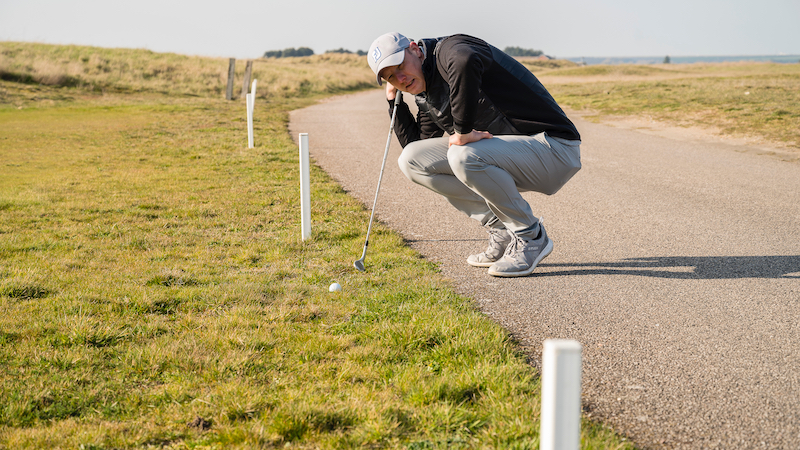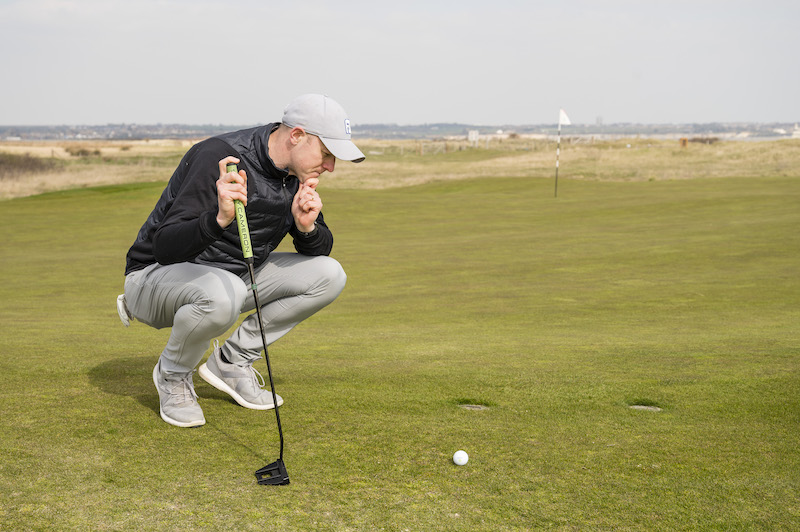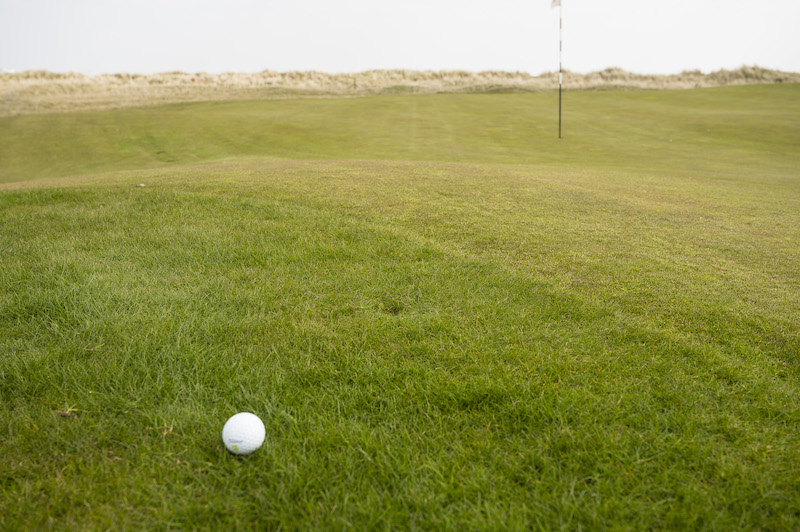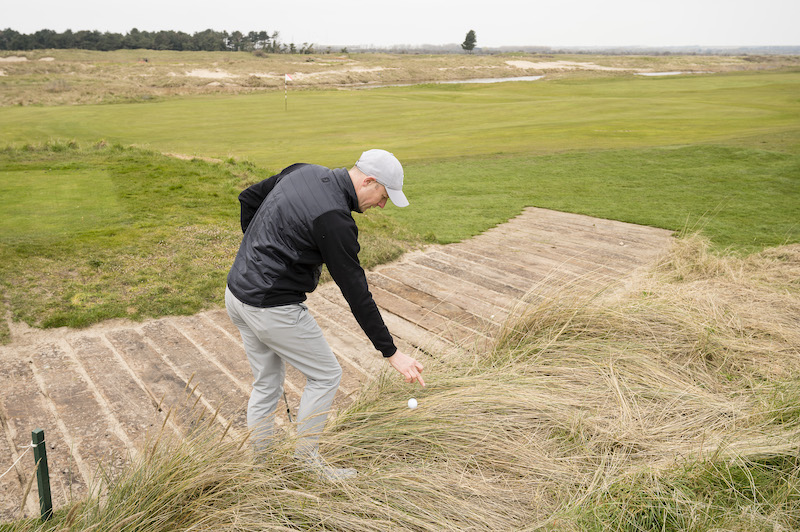7 Golf Rules Mistakes Every Golfer Makes!
In this article and video, Jeremy Ellwood and Neil Tappin highlight the classic golf rules mistakes that every golfer makes or has made at some stage...


In this article and video, Jeremy Ellwood and Neil Tappin highlight the classic golf rules mistakes that every golfer makes or has made at some stage...
7 Golf Rules Mistakes Every Golfer Makes!
The rules of golf can seem complicated but as they need to cover a wide range of eventualities taking place on a vast landscape, their complexity is somewhat unavoidable. That's why it is well worth knowing the most important elements. In this video, Neil Tappin and Jezz Ellwood take a look at the 7 golf rules mistakes every golfer makes!
1) Not clearly indicating second ball is a provisional ball
It’s probably easiest if you do simply say 'I'm going to hit a provisional ball'. But you don’t have to specifically use the word ‘provisional’ under the Rules.
You can say you’re going to proceed under Rule 18.3, or make it clear that you’re hitting another ball provisionally in case you don’t find the first one or find it OOB. The Interpretations on the Rules say that, “I’m going to hit another ball just in case,” is good enough, for example.
If you say nothing before hitting it or just say, “I’m hitting another or reloading,” that’s not good enough. In that scenario, your second ball will automatically become the ball in play even if you find the first in the middle of the fairway.
Subscribe to the Golf Monthly newsletter to stay up to date with all the latest tour news, equipment news, reviews, head-to-heads and buyer’s guides from our team of experienced experts.
Even experienced golfers frequently get things wrong on the provisional ball front in competitions.
2) Lifting ball to identify it without first marking its position
Yes, the Rules have been relaxed so you no longer have to have someone observe the lifting. But you do still have to mark the ball’s position first and you may only lift it if it is reasonably necessary to be able to identify it.

Many people didn’t first mark its position before the 2019 Rules changes and still don’t now. If you need to lift your ball to be able to identify it positively, always remember to mark its position first. You may only clean it to the extent necessary to identify it before replacing it in its original spot.
3) Taking relief from a sprinkler head on your line on the fringe
Contrary to what some golfers believe, this is not an automatic relief scenario. You are entitled to free relief if your ball lies on the sprinkler head (an immovable obstruction) or it would interfere with your stance or area of intended swing.
But if it is merely on your line as below and you really want to putt it, there is no automatic free relief.

However, some courses will have a Local Rule (Model Local Rule F-5) in force. This will allow relief if your ball lies within two club-lengths of a sprinkler head on your line and that sprinkler head is also within two club-lengths of the putting green.
If no such Local Rule exists, there is no free relief. So you may have to reconsider your shot choice if you were hoping to putt.
4) Repairing a pitchmark on your line on the fringe
Your natural instinct might be to repair a pitchmark on your line on the fringe as you would on the putting green. But sadly, you are not allowed to do so even if your ball created it. This would be deemed to be improving the conditions affecting your stroke and a breach of Rule 8.1a.

The only time you may repair a pitchmark on the fringe on your line is if it was created by another player's ball after yours had come to rest. You would then be allowed to restore things to how they were when your ball came to rest.
You can, however, repair a pitchmark on the green at an time even if your ball lies off the green.
5) Exceeding the ball search time of three minutes
Admittedly, very few players actually time their searches, which begin when the player or caddie reach the area where the ball is believed to be. Many golfers do know that we now have only three minutes to search for a ball rather than five. But some are still guilty of searching for far too long.

When the three minutes is up, the ball is lost and you must either proceed under stroke and distance or with your provisional ball. Hopefully, you will have played one if there was any doubt about finding the original!
The good news is that you are no longer penalised for moving your own ball accidentally when searching. So there is no reason not to search more thoroughly than was perhaps the case when you were worried about accidentally kicking your ball and incurring a penalty.
If you do move your ball when searching for it, you must replace it where it was lying and carry on without penalty. Estimate the spot if you can't be sure.
6) Believing nearest point of complete relief entitles you to a good lie
When dropping from a path or other immovable obstruction, many people mistakenly believe they’re entitled to a perfect lie and line. This is perhaps because they don’t really understand what it is they’re taking relief from.

You don’t get free relief from trees, bushes, dreadful lies etc, so if that is where your nearest point of complete relief is (and there is only one nearest point), that is where you must drop. You may, of course, choose to play the ball as it lies if you think that is your best option.
This is definitely one of those golf rules mistakes every golfer makes (or has made at some stage). Many will drop at the ‘nicest point of relief’ rather than ‘nearest’. This will then result in them playing from a wrong place.
7) Not knowing when a ball is considered out of bounds
On the white line somewhere doesn’t necessarily mean your ball is in bounds. The boundary is the course-side edge of any line on the ground or any stakes being used to designate OOB.
So, with a wide OOB line, your ball could be lying on it. But if no part of the ball lies beyond the course-side edge of the line then it is OOB.

When a white line defines OOB, the boundary edge is the course-side edge of the line and the line itself is OOB (Rule 18.2a). A ball is OOB when all of it lies outside the boundary edge of the course. The diagram on page 112 of the Player’s Edition of the Rule book is very helpful here.

Jeremy Ellwood has worked in the golf industry since 1993 and for Golf Monthly since 2002 when he started out as equipment editor. He is now a freelance journalist writing mainly for Golf Monthly. He is an expert on the Rules of Golf having qualified through an R&A course to become a golf referee. He is a senior panelist for Golf Monthly's Top 100 UK & Ireland Course Rankings and has played all of the Top 100 plus 91 of the Next 100, making him well-qualified when it comes to assessing and comparing our premier golf courses. He has now played 1,000 golf courses worldwide in 35 countries, from the humblest of nine-holers in the Scottish Highlands to the very grandest of international golf resorts. He reached the 1,000 mark on his 60th birthday in October 2023 on Vale do Lobo's Ocean course. Put him on a links course anywhere and he will be blissfully content.
Jezz can be contacted via Twitter - @JezzEllwoodGolf
Jeremy is currently playing...
Driver: Ping G425 LST 10.5˚ (draw setting), Mitsubishi Tensei AV Orange 55 S shaft
3 wood: Srixon ZX, EvenFlow Riptide 6.0 S 50g shaft
Hybrid: Ping G425 17˚, Mitsubishi Tensei CK Pro Orange 80 S shaft
Irons 3- to 8-iron: Ping i525, True Temper Dynamic Gold 105 R300 shafts
Irons 9-iron and PW: Honma TWorld TW747Vx, Nippon NS Pro regular shaft
Wedges: Ping Glide 4.0 50˚ and 54˚, 12˚ bounce, True Temper Dynamic Gold 105 R300 shafts
Putter: Kramski HPP 325
Ball: Any premium ball I can find in a charity shop or similar (or out on the course!)